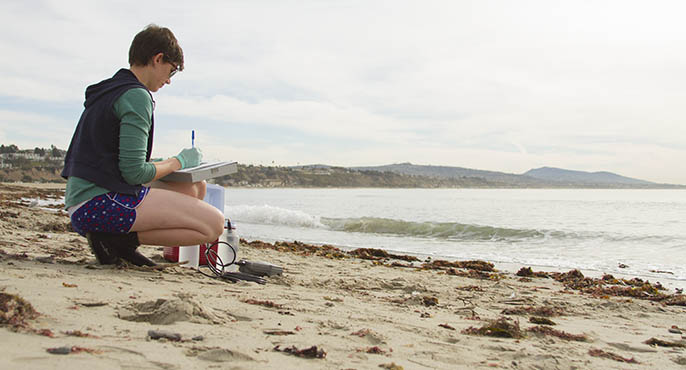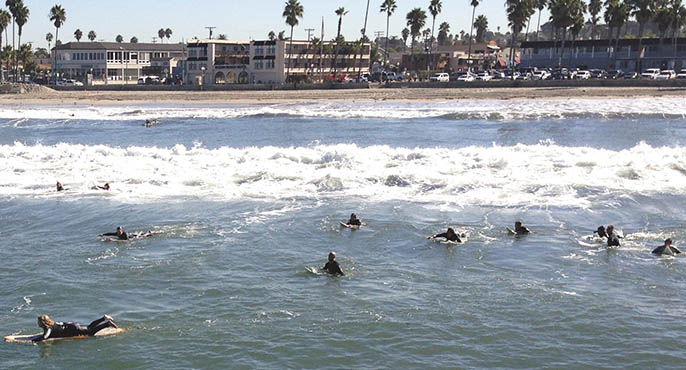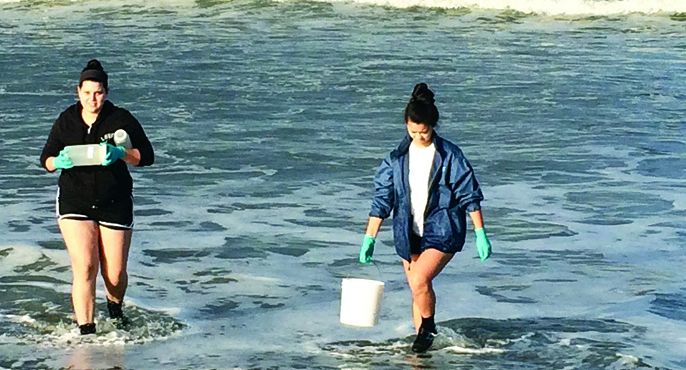![]() Microbial water quality is a focused area of aquatic microbiology dedicated to minimizing the risk of human exposure to waterborne pathogens. Whether swimming and surfing at the beach, or consuming shellfish harvested from coastal waters, the public depends on rigorous, fully vetted science to rapidly detect aquatic microbial contamination and to inform remediation strategies. Advances in molecular microbiology are enabling the water-quality management community to develop incrementally stronger, more effective solutions for protecting public health.
Microbial water quality is a focused area of aquatic microbiology dedicated to minimizing the risk of human exposure to waterborne pathogens. Whether swimming and surfing at the beach, or consuming shellfish harvested from coastal waters, the public depends on rigorous, fully vetted science to rapidly detect aquatic microbial contamination and to inform remediation strategies. Advances in molecular microbiology are enabling the water-quality management community to develop incrementally stronger, more effective solutions for protecting public health.
SCCWRP is part of an international community of researchers working to improve methods for evaluating microbial water quality and assessing risks to public health from waterborne pathogen exposure. SCCWRP’s goal is not only to improve the speed at which microbial contamination can be detected, but also to develop molecular methods for tracing contamination back to its source and origin point. SCCWRP also is focused on helping water-quality managers better understand how field measures of microbial contamination correspond to specific degrees of health risk.

Managing a multi-dimensional problem
Microbial contamination in urbanized aquatic systems is a dynamic, complex challenge to manage. As fecal matter and other untreated waste washes off the land, pathogens travel through waterways and eventually are discharged to coastal waters. Numerous factors influence the degree of health risk posed by these pathogens:
- Fecal contamination comes from varied sources, from animal droppings to leaking sanitation infrastructure to homeless encampments near storm drain channels.
- Non-human sources of contamination are much less likely to contain pathogens infectious to other humans.
- Fecal pathogens are transported through waterways at various speeds and dispersed in various manners.
- Some fecal pathogens, especially viruses, can remain infectious for weeks or months; multiple environmental factors influence degradation rates.
- The wastewater treatment processes that kill bacterial pathogens in sewage do not destroy the bacteria’s DNA. For example, once DNA strands that code for antibiotic resistance are discharged in viable form to aquatic environments, they can potentially be taken up by other bacterial cells, including pathogens that make humans sick.

Next-generation approaches to protecting public health
Advances in molecular microbiology in recent decades have paved the way for next-generation approaches to how water-quality managers identify, track and assess health risks associated with microbial contamination. SCCWRP is an international leader in this field, focusing on three main research lines:
- Rapid methods for microbial contamination detection: Advances in molecular technology have allowed researchers to isolate and measure very specific segments of DNA in microbial contamination as a proxy for tracking pathogens. Unlike traditional bacterial culture-based methods that are the gold standard for contamination monitoring, these molecular methods can produce results in about two hours, instead of 24+ hours. SCCWRP and its partners are working to validate the accuracy and applicability of the DNA-based methods across Southern California’s coastal beaches. SCCWRP’s goal is to enable public health officials to issue same-day warnings to beachgoers when microbial contamination reaches potentially unsafe levels.
- Microbial source tracking: In the coastal zone where humans come into contact with water, Southern California’s water-quality management community vigorously monitors for microbial contamination. But even after microbial contamination is detected, water-quality managers often struggle to trace it back to a source or upstream origin point, limiting the effectiveness of management interventions. SCCWRP and its partners are working to adapt molecular methods to identify whether humans vs. various individual animal species are responsible for observed contamination – and to pinpoint where in a watershed the contamination is coming from.
- Microbial risk assessment: Once microbial contamination has been quantified, water-quality managers need to know how the contamination translates to a level of health risk to beachgoers. SCCWRP has been a leader in quantifying health risk for Southern California’s beachgoing population through epidemiological studies, as well as through health risk modeling approaches such as Quantitative Microbial Risk Assessment (QMRA) that estimate illness risk based on site-specific considerations.

